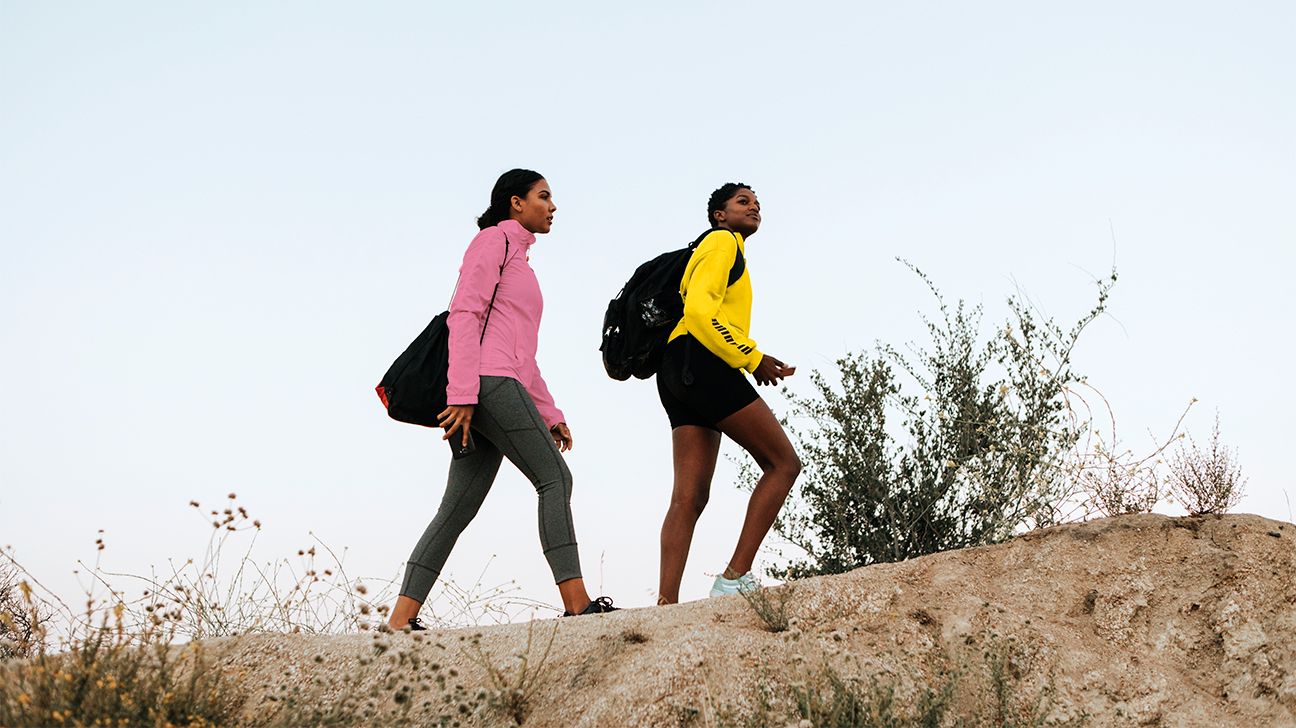Take a Hike, Calories: Here’s How Many You’ll Burn Hiking
There’s nothing quite like the sound of birds chirping and leaves crunching beneath your hiking boots. And while you may be on your journey mostly to soak up the beauty of the great outdoors, as an added bonus, you’re def burning some calories hiking and getting a solid workout.
While hikes vary a lot depending on the incline, terrain, and speed, here’s how to calculate how many calories you’ve burned hiking.

Strolling along a smooth path is one thing — and trekking up treacherous switchbacks is another.
If you want to calculate calories burned by hiking, you’ll have to consider the terrain grade. Not sure what that means? Hop on a treadmill to get the feel. As you gradually up the incline, you’ll feel the resistance in your muscles — not unlike the ascent of your fave trail.
Basically, how many cals you burn on your hike mostly relies on your weight and the trail grade. The higher the grade, the more calories you burn per hour.
Based on your weight, here’s how many calories you can expect to burn per hour at an average walking speed of 2.9 to 3.5 miles per hour:
| Calories burned 1–5% grade | Calories burned 6–15% grade | |
| 120 pounds | 292 | 440 |
| 150 pounds | 360 | 544 |
| 180 pounds | 435 | 656 |
| 210 pounds | 504 | 760 |
| 240 pounds | 578 | 872 |
| 270 pounds | 652 | 984 |
A grade of 1 to 5 percent is mild, while 6 to 15 is medium to pretty steep. Some trails have grades up to 35 percent (yikes!), which would definitely up your burn count.
Of course, these numbers are quick and dirty estimates. Lots of other factors impact your unique calorie burn, including the weight of your backpack, the outside temp, and your age.
Breaking down the formula to calculate the burn
If you want to calculate roughly how many calories you’ll burn per hour hiking, the Metabolic Equivalent (MET) formula can help.
Calories burned = MET (6) * weight (kg) * time (hrs)
The MET is a value that refers to the amount of oxygen used in particular activities.
Since hiking typically has a value of about 6, that’s what you’ll input here. So, if you’re a 150-pound (68 kg) person hiking for 1 hour, you can expect to burn around 408 calories (6*68*1=408).
While this equation doesn’t take into account the incline, sex, and other factors, it provides a decent estimate in a pinch.
The heavier your backpack, the bigger the burden — also, the more calories you’re likely to burn thanks to the extra weight.
While there’s no exact formula for this, on average, expect a light day pack to burn 50 to 100 more calories per hour on the trail. Going for a long journey with your 30+ liter pack in tow? You’ll prob burn at least 200 more calories per hour.
If you’ve packed your 50+ liter bag to the brim, expect to burn even more. So as a rough estimate, a light backpack will cause you to burn about 100 more calories per hour, and a heavier one meant for full-on backpacking will up your burn count by 200+.
For your safety, medical experts from the University of Iowa Hospitals & Clinics recommend you carry no more than 10 percent of your total weight in a backpack. That means if you weigh 150 pounds, try not to carry more than 15 pounds on your back to lower the risk of strain, pain, or injury.
What about hiking the Grand Canyon?
The Grand Cayon hike from the North Kaibab Trailhead to Cottonwood Campground is one of the most popular and breathtaking hikes in the nation.
For reference, a 130-pound person doing the 6.8-mile hike in 4 hours will burn about 1,200 calories. Nice!
https://greatist.com/fitness/hiking-calories-burned
